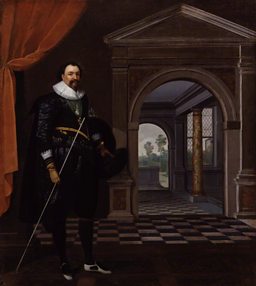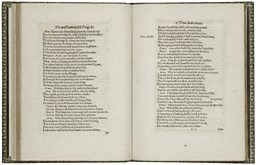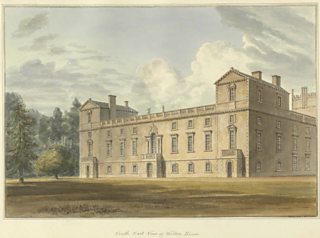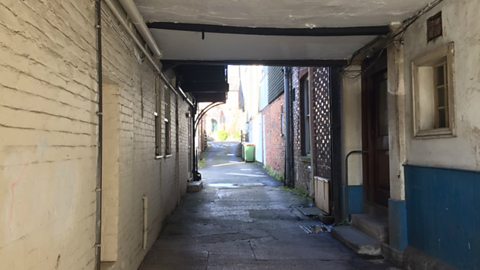Marlborough pays a bargain basement price for Shakespeare’s Acting Company
The prosperous market town of Marlborough in Wiltshire was a popular performance venue for Shakespeare’s company of actors.
His troupe performed there no less than four times while Shakespeare was a part of the company – and still acting – and on two further occasions after his death.
-
![]()
Much ado near me
Hear more Shakespeare stories on BBC Wiltshire
-
![]()
Shakespeare Festival 2016
The BBC celebrates the genius of the bard

However, in 1594, when the company was called The Lord Chamberlain’s Men, they had the dubious distinction of receiving the lowest payment to play by the town at any time during that year, a measly 2s.8d!
The Lord Chamberlain’s Men had the dubious distinction of receiving the lowest payment to play by the town at any time during that year, a measly 2s.8d!
When the company returned shortly after Shakespeare’s death, they were paid far more, 30s on one occasion (and 20s on the other). Unsurprisingly perhaps, given that by that time they were known as the King’s Men and were the premier performing company in the land.
“The town was more generous than it ever had been or ever would be”, writes Professor Ted McGee, Editor for the Wiltshire area from the Records of Early English Drama project (REED).
For Shakespeare's companies and for others, Marlborough had the advantage of being on the main road from London to Bath and Bristol. The town rewarded travelling troupes almost every year from 1583 until 1623, on average more than one company per year.
Shakespeare's company visited Marlborough twice as the Lord Chamberlain's men (in 1594 and 1596-7), four times as the King's men (in 1606, 1607-8, and twice in 1618).
The publication of Titus Andronicus

The year in which the Lord Chamberlain's men first came to Marlborough, 1594, coincides with the publication of Shakespeare's Titus Andronicus, a play that takes us to Longleat House, near Warminster, Wiltshire.
Despite all its uncertainties, the picture does provide a good illustration of the eclectic style of performance that one would expect of an early modern company on tour.
This is because the magnificent library in the stately home of the Marquess of Bath holds many invaluable records of early modern drama, including the unique copy of a sketch of, it seems, Shakespeare's Titus Andronicus in performance.
This document is a single sheet of paper, folded once. The second page contains the drawing at the top and below it a transcription of lines from Act 1, scene 1 and Act 5, scene 1 of Shakespeare's play.
The connections of the picture, the textual excerpts, the date, and the supposed author are all still fraught with uncertainties however. The drawing is signed and dated by Henry Peacham, who graduated from Cambridge in 1595, but we do not know what role he played in the creation or acquisition of the piece.
Despite all its uncertainties, the picture does provide a good illustration of the eclectic style of performance that one would expect of an early modern company on tour. The Titus figure wears a costume, including tunic, toga, and sandals, that approximates the attire of ancient Rome. But Tamora's costume is not distinctively that of a Goth; in her gown and crown, she could be a queen of any realm at various times in history.
The guards at the left of the picture include one who wears baggy pants and a scimitar, as if he is Turkish or Persian, and another in Elizabethan breeches, breast plate, and soldier's armour. Both of them carry halberds, weapons familiar to any 16th-century theatre-goer but anachronisms in ancient Rome—weapons that Shakespeare's company might have borrowed from the locals when in Marlborough or in other towns throughout the realm.
Whether in London or in the provinces, Shakespeare and his fellow actors knew that audiences would play along, use their imaginations, and "piece out [such] imperfections with [their] thoughts." (Henry V)
Wilton's Shakespeare attraction
As well as the geographical handiness of Marlborough, en route between Bristol/Bath and London, there was another likely reason why Shakespeare and his company were so attracted to this part of the world.

Not far away, in Wilton, lived the 3rd Earl of Pembroke William Herbert and his family. They loved drama, and their luxurious mansion at Wilton House was just thirty miles south of Marlborough.
Herbert is famously cited as a candidate to be the mysterious ‘Mr.W.H’ – the ‘fair youth’ to which many of Shakespeare’s sonnets were dedicated. There is no doubt he was popular with Shakespeare – his First Folio was dedicated to him.
And there is evidence this was reciprocated. Dr Siobhan Keenan, in her book 'Acting Companies and their plays in Shakespeare’s London' writes: “We know that Herbert was well acquainted with the players, famously writing of his reluctance to attend a court performance in 1619 because he still mourned for the troupe’s leading player, who had died earlier that year” (Richard Burbage)
Where might Shakespeare's men have performed?
By Prof Ted McGee, Editor for the Wiltshire area from the Records of Early English Drama project (REED)
The Guildhall, which once stood on the north side of Marlborough High Street at its east end, is the only venue mentioned in the records of the borough.
Knowledge of that playing place might also have been lost in the "dark backward and abysm of time" except that an unnamed group of "Stage players", having done some damage during their performances in February 1601, contributed to the repairs of "the frame of the table bordes & the glasse Windowes in ye Guildhall."
The town built a new town hall in 1630 that was destroyed along with most of the other buildings from Shakespeare's time in the great fire in April 1653.

William Shakespeare’s troupe of actors visited Marlborough
Roo Green talks to Nick Fogg, who lives in Marlborough and has written books on the Bard.
Shakespeare on Tour
From the moment they were written through to the present day, Shakespeare’s plays have continued to enthral and inspire audiences. They’ve been performed in venues big and small – including inns, private houses and emerging provincial theatres.

BBC English Regions is building a digital picture which tracks some of the many iconic moments across the country as we follow the ‘explosion’ in the performance of The Bard’s plays, from his own lifetime to recent times.
Drawing on fascinating new research from Records of Early English Drama (REED), plus the British Library's extensive collection of playbills, as well as expertise from De Montfort University and the Arts and Humanities Research Council, Shakespeare on Tour is a unique timeline of iconic moments of those performances, starting with his own troupe of actors, to highlights from more recent times. Listen out for stories on Shakespeare’s legacy on your BBC Local Radio station from Monday 21 March, 2016.
You never know - you might find evidence of Shakespeare’s footsteps close to home…
Craig Henderson, BBC English Regions
Related Links
-
![]()
Shakespeare Lives
The nation’s greatest performing arts institutions mark 400 years since the Bard's death
Shakespeare on Tour: Around Wiltshire
-
![]()
'Calamity' overtakes the Scottish Play
Shakespeare delayed in Salisbury
-
![]()
Shakespeare's men perform before the King at Wilton in Salisbury
A royal audience in Salisbury
-
![]()
Shakespeare Shadows in Salisbury
Pre-Victorian Wiltshire enjoys 'tableaux vivant'
Shakespeare on Tour: Around the country
-
![]()
A horse! A horse! My kingdom for a horse!
King Richard III's horse White Surrey is the star of the show
-
![]()
Modern day Macbeth for Corby steel town
The adaptation encouraged younger viewers to connect to Shakespeare
-
![]()
Sarah Siddons plays Hamlet in Liverpool
Actress becomes first woman known to have played Shakespeare's Prince of Denmark
-
![]()
Child prodigy actor prepares to retire as he headlines in Newcastle
W.R. Grossmith says farewell to the stage at 11










